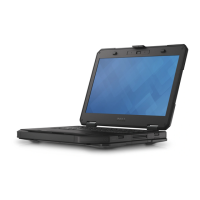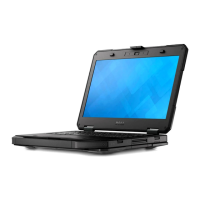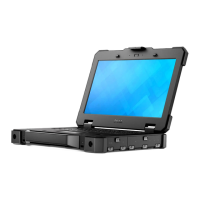Alternate Mode
USB Type-C is a new connector standard that is very small. It is about a third the size of an old USB Type-A plug. This is a single connector
standard that every device should be able to use. USB Type-C ports can support a variety of dierent protocols using “alternate modes,”
which allows you to have adapters that can output HDMI, VGA, DisplayPort, or other types of connections from that single USB port
USB Power Delivery
The USB PD specication is also closely intertwined with USB Type-C. Currently, smartphones, tablets, and other mobile devices often use
a USB connection to charge. A USB 2.0 connection provides up to 2.5 watts of power — that'll charge your phone, but that's about it. A
laptop might require up to 60 watts, for example. The USB Power Delivery specication ups this power delivery to 100 watts. It's bi-
directional, so a device can either send or receive power. And this power can be transferred at the same time the device is transmitting
data across the connection.
This could spell the end of all those proprietary laptop charging cables, with everything charging via a standard USB connection. You could
charge your laptop from one of those portable battery packs you charge your smartphones and other portable devices from today. You
could plug your laptop into an external display connected to a power cable, and that external display would charge your laptop as you used
it as an external display — all via the one little USB Type-C connection. To use this, the device and the cable have to support USB Power
Delivery. Just having a USB Type-C connection doesn't necessarily mean they do.
USB Type-C and USB 3.1
USB 3.1 is a new USB standard. USB 3's theoretical bandwidth is 5 Gbps, while USB 3.1's is 10 Gbps. That's double the bandwidth, as fast
as a rst-generation Thunderbolt connector. USB Type-C isn't the same thing as USB 3.1. USB Type-C is just a connector shape, and the
underlying technology could just be USB 2 or USB 3.0. In fact, Nokia's N1 Android tablet uses a USB Type-C connector, but underneath it's
all USB 2.0 — not even USB 3.0. However, these technologies are closely related.
Ethernet
The Intel I219LM Jacksonville WGI219LM family of Gigabit Ethernet controllers provides compact, single-port integrated physical layer
devices that connect to the Intel Skylake chipsets.
The Intel WGI219LM supports the latest Ethernet security standard known as MACsec3 (IEEE standard 802.1ae). The Intel WGI219LM is
the corporate LAN product with support for Intel vPro; technology, Intel AMT2, Energy Ecient Ethernet (802.3az), MACsec (802.1ae),
Intel SIPP, iSCSI Boot, Server OS support.
Product Features
General
• 10 BASE-T IEEE 802.3 specication conformance
• 100 BASE-TX IEEE 802.3 specication conformance
• 1000 BASE-T IEEE 802.3 specication conformance
• Energy Ecient Ethernet (EEE)
• IEEE 802.3az support [Low Power Idle (LPI) mode]
• IEEE 802.3u autonegotiation conformance
• Supports carrier extension (half duplex)
Technology and components
61

